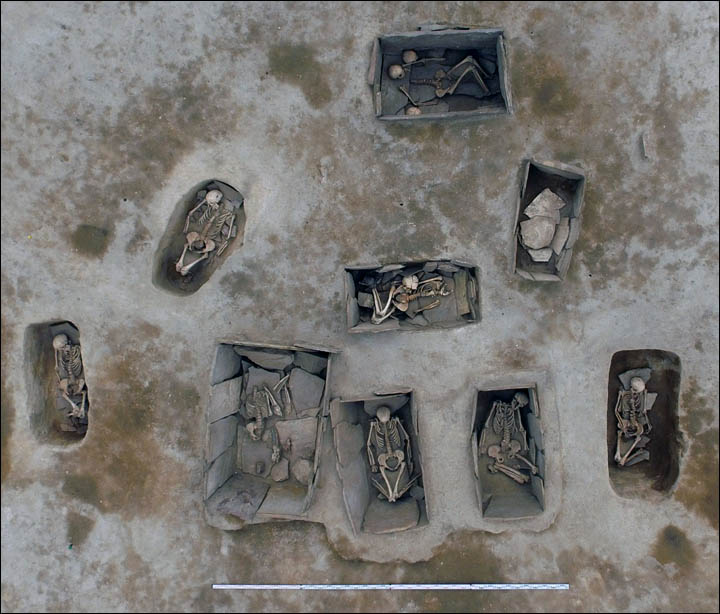Genetics do point out to an origin of CWC in populations very similar to late Sredny Stog, but still there is a gap of 500-600 years between the latest Sredny Stog and the expansion of CWC in Northeast Europe (2900 BC). CWC certainly did not come directly from a "classic" Sredny Stog population in its heyday, but at best from a late Sredny Stog right during the transition to Western Yamna.
Yes, but still having ancestors who were distinct from Yamnaya.
That gap is a LOT of time, more than enough for linguistic shift even in the absence of much genetic replacement, especially because in that exact same period (3500-3000 BC) Yamna was encroaching on and absorbing the Sredny Stog culture, extending its reach as far as Western Ukraine - but we can't yet affirm for sure that that Yamna expansion also meant a wholesale population replacement in Ukraine, annihilating all the groups, with their distinctive genetic makeup, that could've become the ancestor emigrants who formed CWC after 3000 BC.
Just think of how Turkic language was absorbed by Western Steppe peoples that are still genetically overwhelmingly West Eurasian and actually, most probably, overwhelmingly Scythian-like, so much that the spread of Turkic-speaking peoples to the west wasn't necessarily accompanied by much if any "Proto-Turkic admixture". The cultural expansion of Yamna, like Turks, didn't necessarily mean that all the tribes they absorbed ceased to exist even if they changed part of their traditional culture and shifted to another language. That would've been especially easy to Late Sredny Stog >>> Early Yamna people, who may have already spoken similar languages.
We need to make a distinction between Sredny Stog-related autosomal makeup and Y-DNA (Sredny Stog genetic structure, let's say it) and fully fledged Sredny Stog culture, presumably still before intense Yamna influence/gradual acculturation.
I don't think it is unlikely at all, actually quite the opposite, very probable that Sredny Stog spoke some kind of PIE dialect or even language, but due to those chronological reasons I'm not so sure that "the" Late Common PIE, that gave us modern descendants like Balto-Slavic and Indo-Iranian (and any possible CWC-derived IE branch), was already spoken in Sredny Stog, not just one of the early dialects of PIE (or even a small IE language family that was superseded by the expansion of latter daughter branches).
I'm not saying that whatever Yamnaya was speaking didn't at least influence the resulting language of CWC.
To be clear I think that early forms of PIE were spoken from the Ukraine to the Volga (Urals?) during the Eneolithic if not the Neolithic given the continuity. Probably from the Neolithic honestly. The cultures maintain very close relationships with each other over a vast swath of land since from the Neolithic (Dneiper Donets and Samara) to the late bronze age. The notion of them sharing a common language is likely, in fact this is supported by looking at the steppe in late bronze age/early Iron age where they all likely spoke Iranian.
Something unique was happening on the steppe with horse domestication and stock breeding and I don't think it's a coincidence that V88 (from neolithic Ukraine) is associated with cattle herders. Perhaps the spread of V88 out of Ukraine were IE speakers initially.
Whatever, I'm over it.


